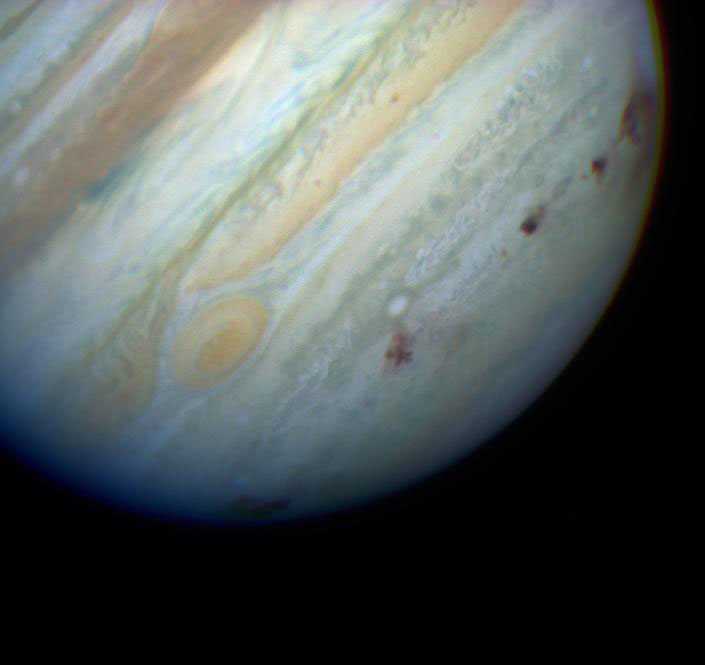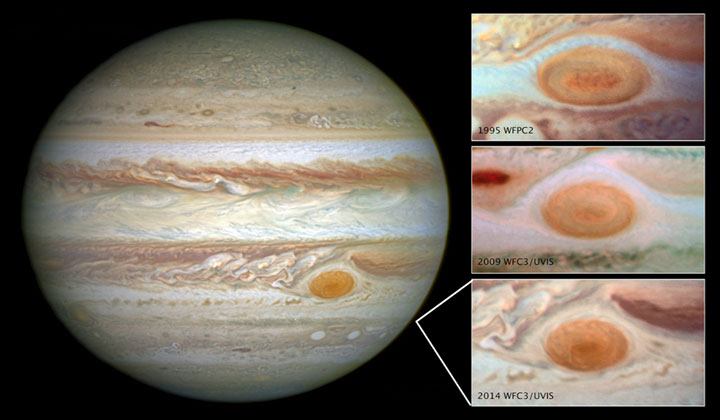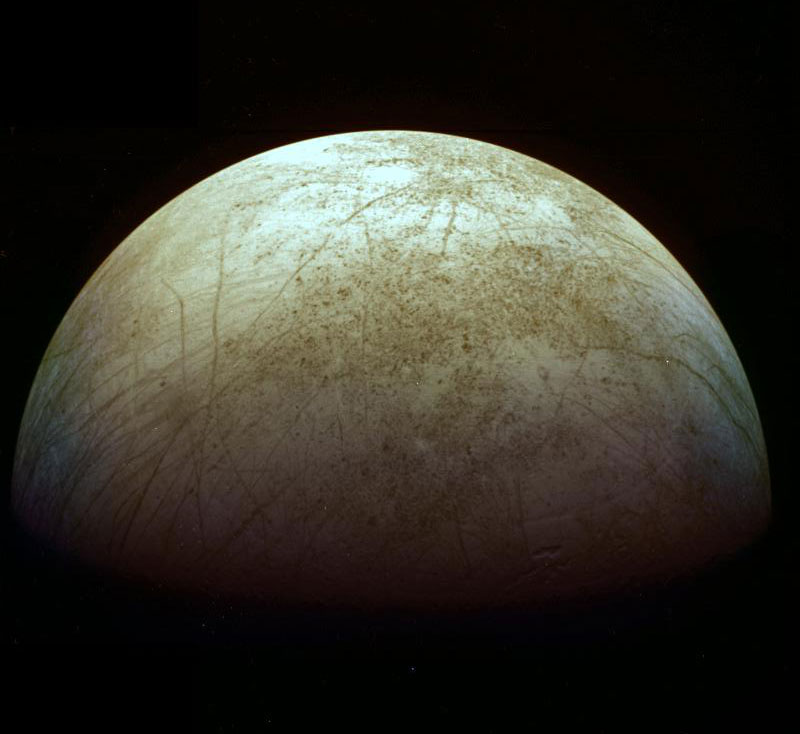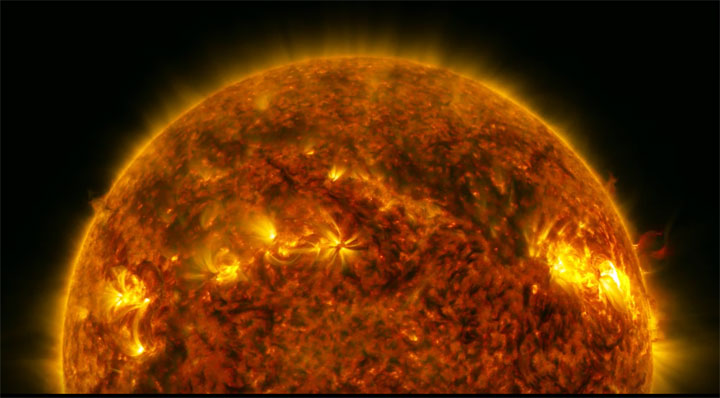On the evening of July 4, NASA’s Juno spacecraft will finally reach its destination: in orbit around Jupiter, the most massive planet in our solar system.

Jupiter is easily visible to the unaided eye (in fact it will be visible until the middle of August), which makes it a favourite for astronomers (aside from picturesque Saturn).
Here are a few facts about Jupiter you probably didn’t know.
More than a ‘storm of the century’
Jupiter’s Great Red Spot (often called the GRS), is a storm that has been raging for hundreds of years.
It is the largest, most powerful hurricane in the solar system, with a diameter of roughly 18,000 km and whipping winds that top more than 600 km/h.
The Great Red Spot has been shrinking over the years: in 1979, Voyager 1 estimated the storm to be roughly 23,334 km in diameter.
The storm is so large, it can be seen through large amateur telescopes.
Ringed planet
While Saturn gets all the attention for its stunning ring system, it’s not the only planet with rings.
The rings around Jupiter were unknown until 1979 when NASA’s Voyager 1 spacecraft spotted them.
There are three main rings: the gossamer ring, which is a pair of faint outer rings; a flat, wide main ring; and then a thicker, inner ring called the halo.
NASA believes the dust in the rings are a result of two small moons colliding.
Monster magnetic field (and seriously intense radiation)
Jupiter has the most powerful magnetic field of all the planets in our solar system. This magnetic field triggers auroras (we often refer to them as the northern or southern lights here on Earth).
Jupiter’s auroras are hundreds of times more energetic than auroras experienced here at home.
Earth’s magnetic field, which protects us from harmful radiation from space, is created by Earth’s interior, a combination of the liquid layer of iron, nickel and other metals around the solid inner core. The flow of liquid iron becomes electrically charged, producing magnetic fields.
This monster magnetic field also produces intense radiation belts that are thousands of times stronger than Earth’s own Van Allen belt.
The Juno spacecraft will examine Jupiter’s powerful magnetic field believed to be caused by hydrogen, rapidly rotating within its interior.
Moons galore
Jupiter’s enormous gravity means that it can often capture smaller objects.
It has 53 confirmed moons with another 14 more unconfirmed.
Four of Jupiter’s largest moons can be seen through binoculars as they orbit the massive planet (if you have a pair of binoculars, try taking a look when Jupiter is visible in the night sky and you’ll see how their positions change each night). The moons — Europa, Ganymede, Io and Callisto — are all incredibly different from one another, from the icy Europa to the volcanic Io.
READ MORE: Why are people excited about a mission to Jupiter’s moon? One word—Life
NASA has announced a mission to Europa, a moon that many believe holds the best chance for life in our solar system.
A failed star?
Some have called Jupiter a “failed star,” but that’s not quite correct.
In order for a star — which is comprised of mostly helium and hydrogen — to form, fusion has to take place at its core.
And while Jupiter is indeed comprised mostly of helium and hydrogen gases, it doesn’t have the mass needed to begin fusion and ignite as a star. It would have to be 80 times more massive.
Fastest-spinning planet in solar system
Here at home, we know Earth rotates on its axis once every 24 hours, or more accurately 23.93 hours. That’s because we’re rotating at 1,675 km/h.
Jupiter, though, rotates at about 43,000 km/h. That gives it a day of just 9.9 hours.
READ MORE: NASA’s Juno spacecraft one step closer to uncovering Jupiter’s secrets
But calculating Jupiter’s rotation is a bit tricky: like the sun, different parts of the planet rotate at different speeds. At the pole, for example, it takes about five minutes longer for an orbit compared to the equator.
This differential in rotation makes the planet bulge slightly at its equator.
Slingshot
Because Jupiter is the largest, most massive planet in our solar system, it can influence the orbits of stragglers left over from the formation of the system.
Some suggest that Jupiter protects us from potential harmful asteroids (PHA) and comets. While that might be true in some cases, it’s not in all.
Long-period comets — ones that take a few hundred years to orbit the sun — are believed to be strongly affected by Jupiter’s gravity. Astronomers believe Jupiter slings them away from Earth.
And in 1994, astronomers were able to witness the influence of Jupiter’s gravity in real time: Comet Shoemaker-Levy 9 — which had broken into several pieces due to the influence of the planet’s enormous gravity — collided with the planet.

But at the same time, there is a chance that Jupiter can also change the orbits of comets. It can push them towards the sun, which in turn could put them in the path of Earth.









Comments